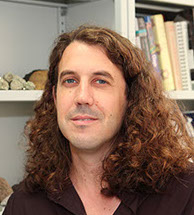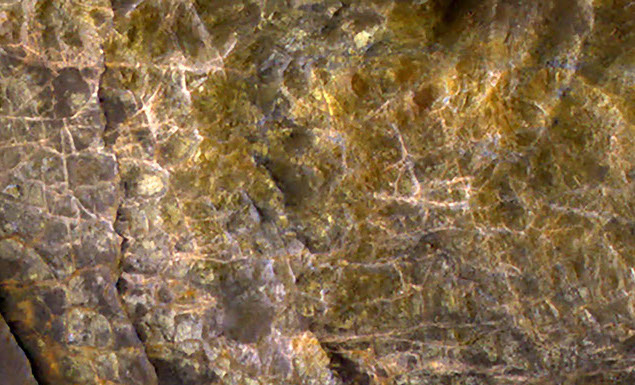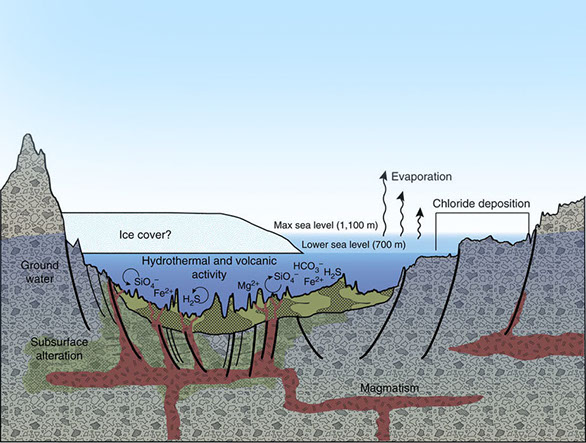Earth-like deposits which formed nearly four billion years ago on the seabed of the ancient Eridania basin on Mars, may hold clues to the origins of life on Earth. Geologist Dr Joseph Michalski in the Department of Earth Sciences detected the minerals using images and infrared spectroscopy from satellites in orbit around Mars and discovered they were similar to deposits found on the seafloor of early Earth billions of years ago.
The finding alone is significant, but what gives it extreme value, said Dr Michalski, is that “ancient rocks like these are better preserved on Mars than on Earth because our planet has plate tectonics, which recycle the crust while Mars does not. Any further understanding of the actual origins of life or prebiotic chemistry from such rocks on Earth is severely hampered because they have deformed physically over billions of years. Ancient rocks on Earth are like a wall that’s been graffitied over a million times – there are too many layers to find the original. The Mars deposits are more pristine and, therefore, could provide a window into the long lost geologic record of the early Earth.”
The deposits were discovered using infrared data from the Compact Reconnaissance Imaging Spectrometer for Mars (CRISM) instrument. CRISM has been in orbit around Mars since 2006 and NASA makes the data from this infrared camera freely available to anyone. It is capable of detecting light in >500 wavelengths – most of them invisible to the human eye.
By measuring the way infrared light reflects off the Martian surface they were able to identify specific minerals on Mars via their unique fingerprint in the infrared spectrum. The team also used remote sensing measurements of heat radiation, reflected lasers and high-resolution visible images to study the properties of the planet’s surface.
On Earth, geologists study the chemistry and mineralogy of rocks, their age relationships and context to interpret how the environment has changed through time. Dr Michalski and his team do the same type of geology, but on Mars. They described the origin, age and composition of rocks in the Eridania region of Mars and concluded that these materials formed in a seafloor environment. They show that these rocks compare to those formed in the seafloor on Earth – an environment thought by some to be the crucible of life on our planet, nearly four billion years ago.
“In the planetary sciences, there are many different experts in their own particular fields, but sometimes they stay in their own areas and don’t communicate ideas and discoveries to each other,” said Dr Michalski. “I cross sub-disciplines and link sub-subjects and so I was able to join it all together by studying the minerals and putting them in a geological context.”
The findings have been published in Nature Communications, and his team of students are currently continuing the research, mapping the finer details and further testing the seafloor hypothesis.
Asked the sixty-million-dollar question, does this mean there is life on Mars? Dr Michalski raised his eyebrows. “There is fascination with Mars – whether it’s about life on Mars angle, little green man, press excitement when the possibility of water there was discovered, or speculation about its suitability as the planet humans move to when we’ve destroyed this one – but most of this interest is misdirected.
“What is interesting, scientifically, is that Mars is the most Earth-like planet we know – it has volcanoes, sand dunes and dried-up river channels. These features were first discovered in the 1960s and that has driven Mars research ever since. In the 1990s, a fleet of spacecraft from NASA and Europe were sent to look at Mars, and now scientists are receiving a lot of high-quality data on the planet’s climate, make-up, etc.”
The Eridania basin was first mapped in 2003 by American scientist Dr Ross Irwin III who ascertained that it is a massive sea with a big channel running to it. The basin is about three times the size of the Caspian Sea, but since Mars is smaller than Earth, Eridania is relatively bigger in ratio to the size of the planet.
Active chemistry
“It’s a vast closed sea filled with a huge volume of water which probably has hydrothermal activity – and the elevated temperature means more active chemistry is going on,” said Dr Michalski. “The basin is incredibly unusual: there is no global ocean on Mars, as was previously thought, but this is an active sea and the minerals we are detecting are extremely old and analogous to similar ancient minerals on Earth.
“So, there may not have been life there, but we still have a huge amount to learn from this. The indications are that if we could go there we would find traces of organic chemistry. On Earth, there are a number of ideas for how abiogenesis – the formation of life from abiotic chemistry – occurred. These theories lead us to hydrothermal settings, with chemistry similar to that in these newly discovered deposits on Mars. The rocks on Mars could provide invaluable insight into how pre-life chemistry leads to the formation of life.”
Asked when going there may be an option, Dr Michalski said: “We could get a human to Mars 20 years from the time we decide we wish to do so. The timeframe is a proportional to our financial investment and tolerance of risk. Right now, people are risk-averse and generally opposed to spending funds in space. So, we aren’t going to Mars until those things change a bit.”

Dr Joseph Michalski
![]() The [Eridania] basin is incredibly unusual… this is an active sea and the minerals we are detecting are extremely old and analogous to similar ancient minerals on Earth.
The [Eridania] basin is incredibly unusual… this is an active sea and the minerals we are detecting are extremely old and analogous to similar ancient minerals on Earth. ![]()

A false colour image of bedrock in the Eridania region shows altered volcanic-sedimentary rocks from nearly four billion years ago. The mottled colour patters correspond to different alteration minerals that formed from interaction of seawater with hot rock. Dense networks of veins in the rocks formed from hydrothermal fluids flowing through the bedrock.
The Martian Question
Infrared remote sensing data returned from Mars suggests that the planet may hold key information on the origins of life, clues that are no longer preserved on Earth.

This schematic diagram shows a cross section of the ancient sea in Eridania, Mars. An ancient sea over 1km deep might have been ice covered, but at the floor of the sea would have been an active hydrothermal system with chemically rich waters. Such an environment is akin to that where life is thought to have originated on Earth.


